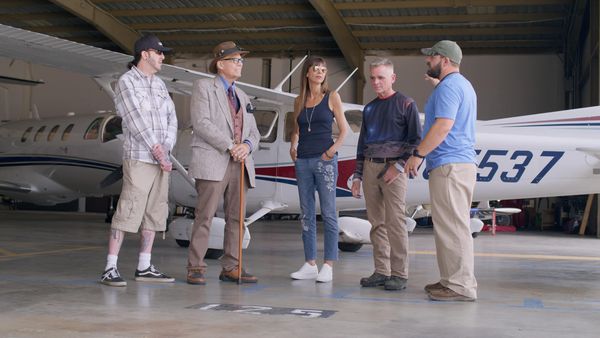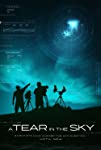Eye For Film >> Movies >> A Tear In The Sky (2022) Film Review
A Tear In The Sky
Reviewed by: Jennie Kermode

Are you a believer in an alien presence in our skies? Rumours of such phenomena date back over a century and, indeed, strange sightings in the skies go back long before that, though they were previously explained in different ways. Talk to modern UFO enthusiasts and you will tend to be regaled with a lot of loosely connected theories about disparate phenomena. A Tear In The Sky follows a project which is trying to apply a more scientific approach by narrowing its focus and applying close, multi-method observation to one specific phenomenon: the ‘tictacs’ frequently observed off the coast of California.
Leading the effort, and directing and presenting this documentary, is Caroline Cory, who has an MA in Counselling Psychology from the University of Austin and has built a successful career as an author and public speaker focused on extra sensory perception and ‘ufology’. She’s supported by Michio Kaku, who teaches theoretical physics in new York and has produced a number of peer reviewed papers, despite being best known for highly simplified pop science presentations. On the ground are computational physicist Kevin H Knuth and Matthew Szydagis, who graduated in philosophy before going on to teach physics at Albany. In the studio is William Shatner, whose principal qualification seems to be that he’s Cory’s lifelong idol, but who is also a familiar face for international (if not necessarily interplanetary) viewers.
The project is centred on a particular area between the California coast and the island of Catalina, which enables equipment set up at different points to triangulate and determine the position of observed phenomena as well as comparing observations from different standpoints. The team uses standard imaging, infrared and radiation tracking as well as comparing sightings to the position of known aircraft in the unregulated airspace (which latter seems especially important after we see Cory getting excited about a comparatively slow moving, blinking white light which looks very much like a plane). There is, of course, no accounting for unknown flights, and one wonders if local police forces will take an interest in the film when trying to identify drug trafficking routes.
It probably looks very impressive to a lot of viewers, and it certainly represents a serious effort, but aspects of the team’s approach raise concern, such as their inability to understand how an object visible from one position with a regular lens can be invisible from another with a fisheye lens (not a mystery at all to anyone with a decent grounding in optics). The real problem lies not in how data is captured but in how it is analysed, at which point there is so much jumping to conclusions and post-hoc justification that it’s difficult to consider this science at all. Despite the proud boasts at the end of the film, this couldn’t hope to survive peer review – and yet that’s not to say that the data itself isn’t interesting, or that the film has nothing to offer.
Cory does, to her credit, take a little time to explore terrestrial phenomena which could potentially be responsible for sightings like these. There’s an all too brief detour into the world of experimental aircraft, including ‘bat drones’ launched by catapult and others which can fly at an astonishing Mach nine. There’s also a little bit about the history of the sightings, though here no specific allowance is made for the possibility that military technology was advancing more quickly than official releases suggested. Navy veterans report ‘men in khaki’ arriving on their boat after one such incident and confiscating or erasing all possible recordings. This is presented as if it were evidence of a conspiracy to cover up the existence of extra terrestrial life, when a conspiracy to cover up the existence of new types of aircraft seems distinctly more likely.
It’s this tendency to try to fit evidence to pre-existing ideas which undermines the film’s scientific credibility, but it’s intriguing as a study of the mechanics of belief. One military participant says that he doesn’t mind what kind of explanation he gets as long as he can have an answer. There is evidence of the traumatising effect of being ordered not to accept what one has seen with one’s own eyes. Others grasp at every little indicator that they might have been right all along in ascribing what they saw to the presence of aliens. Aliens represent hope, after all, and an escape from the mundane world.
This is an independent film and its production standards are not the greatest. Cory makes some odd choices as director, from camera angles which make her look as if she’s talking to an unseen third party, to the use of dramatic music more befitting of a soap opera than a serious documentary. Towards the end there is a lot of repetition and points are overstated in a way which makes the whole thing feel like an amateur propaganda piece. That said, it will no doubt hold some appeal for UFO enthusiasts, whether they are true believers or not, and, as one participant points out, it establishes that with today’s technology there is a lot that average people can do to explore the world (and perhaps others) for themselves.
Reviewed on: 09 May 2022















